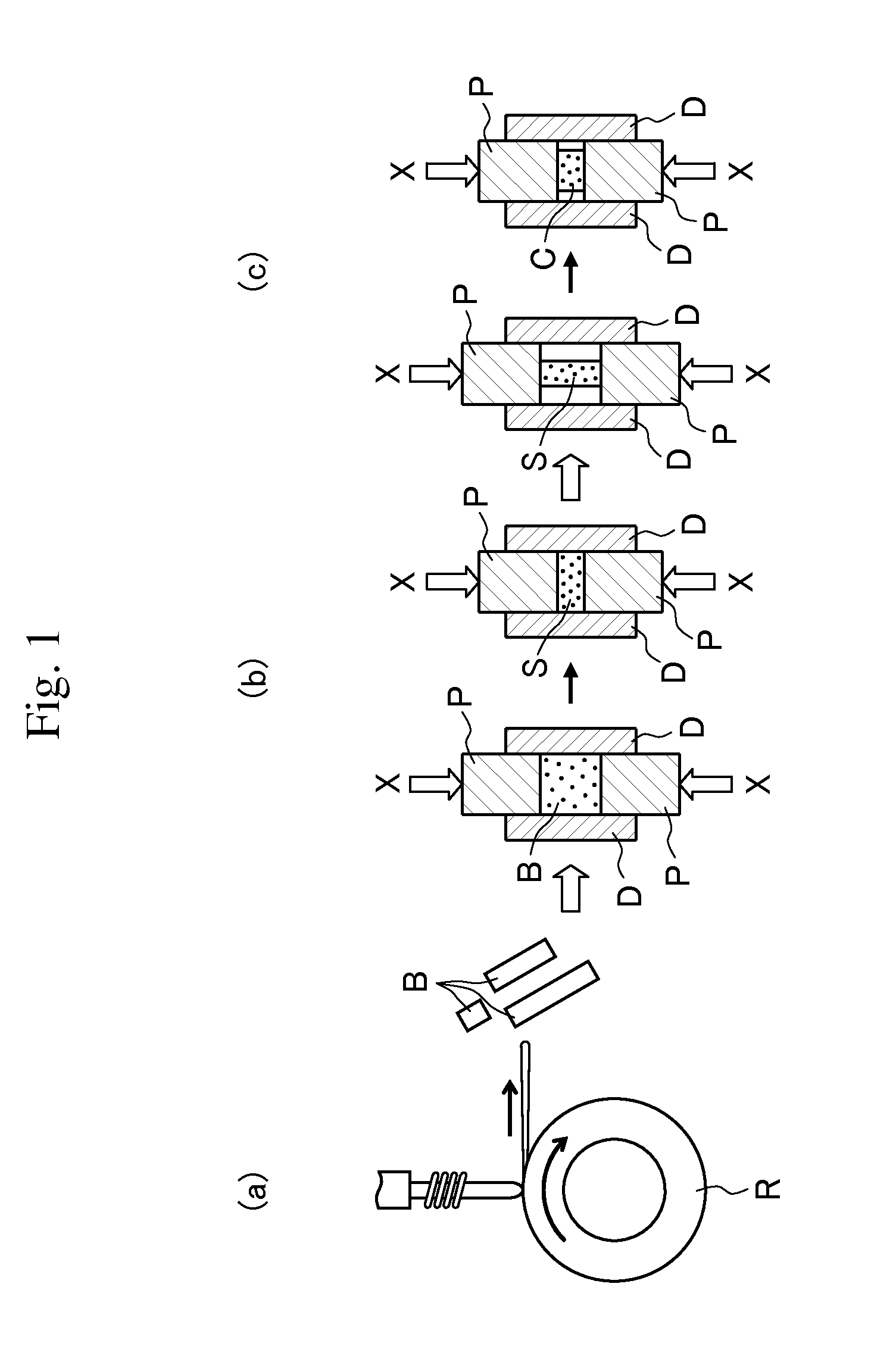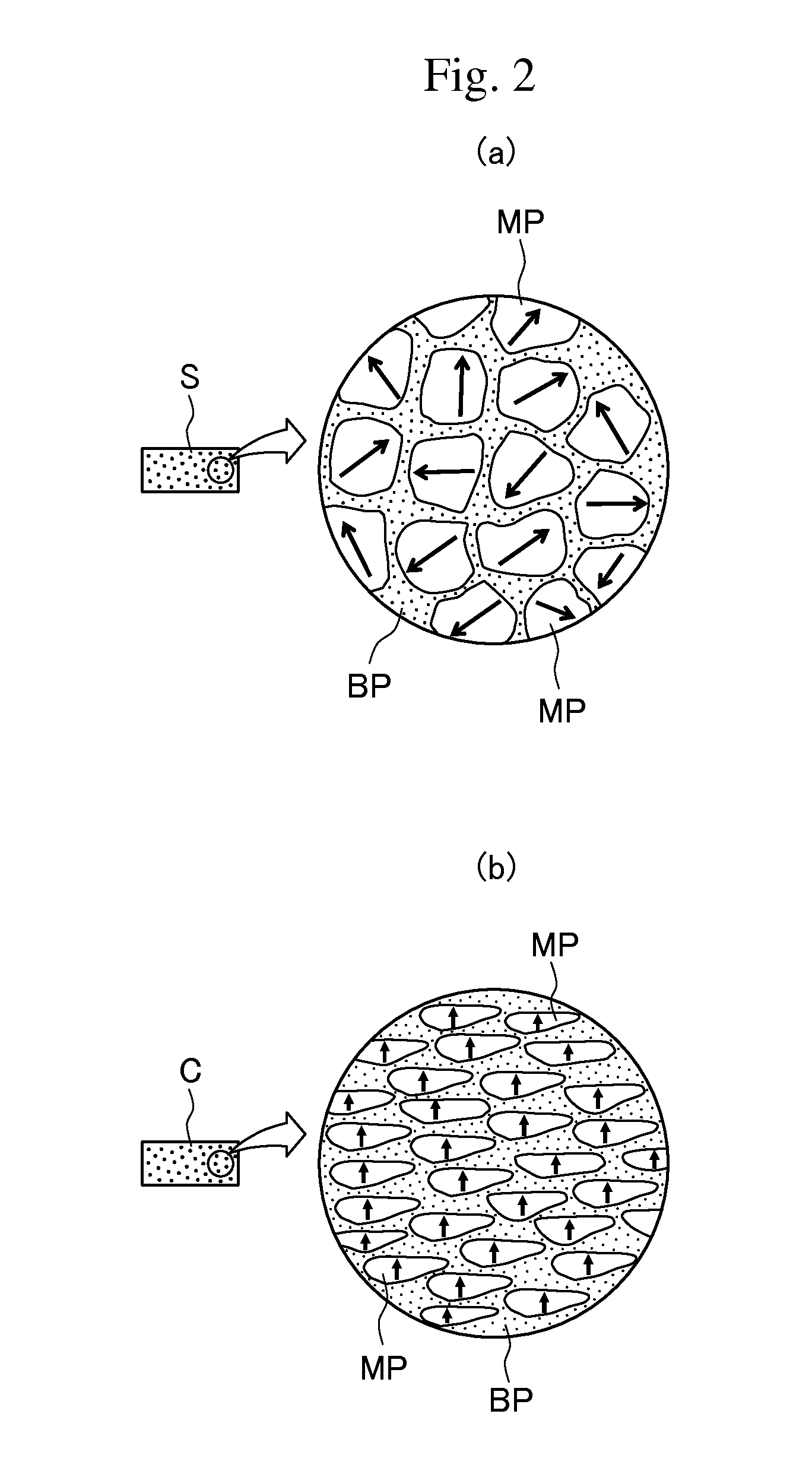Rare-earth magnet and method for producing the same
a technology magnets, applied in the field of rare earth magnets, can solve the problems of insufficient coercivity, inability to suppress the coarsening of crystal grains, and the probability of reducing the coercivity, and achieve excellent coercivity performance and magnetization performance, and suppress the coarsening of nanocrystalline grains
- Summary
- Abstract
- Description
- Claims
- Application Information
AI Technical Summary
Benefits of technology
Problems solved by technology
Method used
Image
Examples
Embodiment Construction
[0050]Hereinafter, embodiments of a rare-earth magnet of the present invention and a method for producing the same will be described with reference to the drawings.
(Method for Producing Rare-Earth Magnet)
[0051]FIGS. 1(a), (b), and (c) are schematic views sequentially illustrating a first step of a method for producing a rare-earth magnet of the present invention, and FIG. 3(a) is a view illustrating a second step of the production method. In addition, FIG. 2(a) is a view illustrating the micro-structure of a sintered body shown in FIG. 1(b), and FIG. 2(b) is a view illustrating the micro-structure of the molded body in FIG. 1(c). Further, 3(b) is a view illustrating the micro-structure of a rare-earth magnet whose structure is being modified by a modifying alloy, and FIG. 3(c) is a view illustrating the micro-structure of the rare-earth magnet whose structure has been modified by the modifying alloy (i.e., the rare-earth magnet of the present invention).
[0052]As shown in FIG. 1(a), ...
PUM
| Property | Measurement | Unit |
|---|---|---|
| crystal grain size | aaaaa | aaaaa |
| temperature | aaaaa | aaaaa |
| temperature | aaaaa | aaaaa |
Abstract
Description
Claims
Application Information
 Login to View More
Login to View More - R&D
- Intellectual Property
- Life Sciences
- Materials
- Tech Scout
- Unparalleled Data Quality
- Higher Quality Content
- 60% Fewer Hallucinations
Browse by: Latest US Patents, China's latest patents, Technical Efficacy Thesaurus, Application Domain, Technology Topic, Popular Technical Reports.
© 2025 PatSnap. All rights reserved.Legal|Privacy policy|Modern Slavery Act Transparency Statement|Sitemap|About US| Contact US: help@patsnap.com



